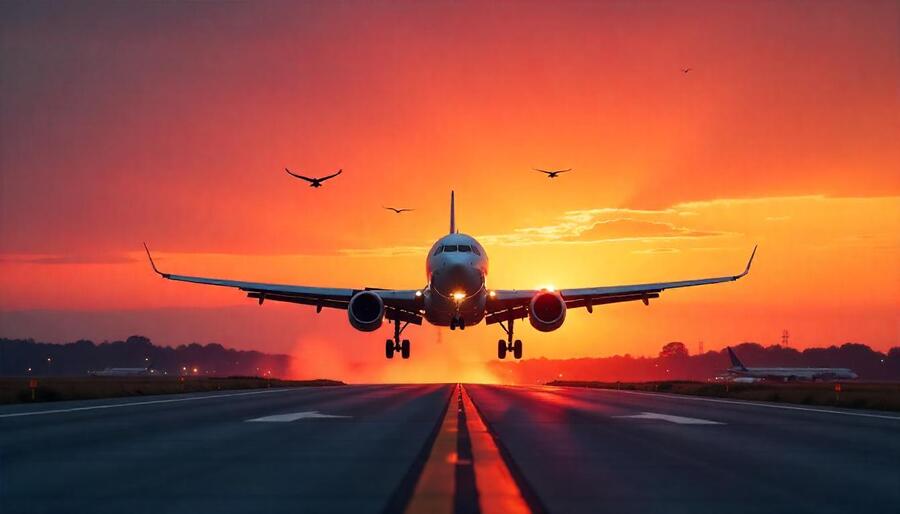≡-Thailand Unveils Game-Changing Air Route Initiative to Supercharge Tourism Growth in Untapped Secondary Cities – Viral of Today
<> Viral of Today <>
Home » THAILAND » Thailand Unveils Game-Changing Air Route Initiative to Supercharge Tourism Growth in Untapped Secondary Cities Sunday, June 1, 2025As a bold bid to spur tourism dispersal and realize the economic potential of offbeat locations, Thailand has launched its pioneering “New Route – New Airline” program that has a twofold goal of enhancing substantially air access to secondary cities and incentivizing airlines to introduce previously unserved routes. The program aims to bring in more tourists, inject local communities, and decongest prime tourist centers—ultimately charting Thailand’s offbeat regions as new and compelling tourist frontiers.Thailand’s aviation sector is undergoing a major transformation aimed at decentralizing air travel and revitalizing tourism in secondary cities. In a strategic move by the Department of Airports (DOA), operating under the Ministry of Transport, a new aviation initiative titled “New Route – New Airline” has been launched to spur economic growth through regional air connectivity.This comprehensive scheme is designed to attract domestic carriers to initiate routes that connect lesser-served airports, thus unlocking tourism and investment potential across the country. Focusing on improved access to lesser-known destinations, the initiative aims to evenly distribute tourism benefits across Thailand, moving beyond the usual draws of Bangkok, Chiang Mai, and Phuket.Expanding Thailand’s Domestic SkywaysAt the heart of this initiative is a forward-looking vision to distribute tourist traffic more evenly and reduce pressure on overburdened destinations. The New Route – New Airline project encourages airline operators to establish direct flights to secondary cities that are often overlooked in travel itineraries due to limited connectivity.As part of this scheme, Thai Lion Air became the first airline to be granted operational rights to open new interregional routes. The airline is set to inaugurate a route connecting U-Tapao to Udon Thani on June 11. This will be followed by the launch of another new route from Don Mueang to Nakhon Phanom on June 19. These connections mark a new chapter in Thailand’s effort to strengthen its aviation network and create bridges to underrepresented regions.Incentivizing Airline Participation with Financial BenefitsTo enhance the attractiveness of the scheme, the DOA has introduced a series of substantial financial incentives for participating airlines. The department has implemented a regulation that slashes aircraft landing and parking fees by fifty percent for one year on routes that are classified as new. This applies to routes that have never been operated from a specific origin or destination airport or those that have not been in service for over a year.Moreover, airlines that are either entering a new airport for the first time or returning after a service gap of at least one year will receive a three-month benefit in the form of a fifty percent discount on landing and parking charges.These incentives are specifically structured to mitigate the startup costs typically associated with launching new services. They also represent a commitment by the Thai government to nurture a competitive airline market, encourage fare reductions, and elevate service standards.Strategic Vision for Inclusive TourismThailand’s tourism landscape has long been shaped by iconic cities and islands. However, this centralization has led to congestion, rising costs, and an uneven distribution of economic benefits. By realigning air routes and bolstering access to emerging destinations, the government aims to redefine the visitor experience and stimulate community-based tourism.The New Route – New Airline initiative is not merely a logistical enhancement; it serves as a vehicle for regional development. Opening up secondary airports introduces tourists to lesser-known cultural, historical, and natural attractions. This supports local economies, creates employment opportunities, and nurtures grassroots participation in the tourism sector.Enhancing Regional Airports’ Role in National DevelopmentThe success of this initiative is closely tied to the readiness and capacity of Thailand’s regional airports. These facilities—many underutilized in the past—are now expected to play pivotal roles as gateways to domestic travel and tourism.With upgraded infrastructure and support from the Ministry of Transport, airports such as U-Tapao, Udon Thani, and Nakhon Phanom are strategically positioned to meet increasing demand. Their development is aligned with broader national goals to reduce logistical bottlenecks and promote balanced regional growth.Driving Competition and Fair Pricing in the Airline SectorAnother central aim of the initiative is to disrupt route monopolies by introducing more airline operators to specific sectors. When only one carrier operates a route, fare prices and service quality often stagnate due to a lack of competition. By incentivizing new entrants, the DOA expects market competition to intensify, resulting in better travel options for passengers.This competitive atmosphere is expected to directly benefit travelers through lower fares, improved onboard experiences, and greater scheduling flexibility. Airlines, in turn, gain access to new markets with less financial risk, setting the stage for long-term sustainability and profitability.Paving the Way: Thai Lion Air Takes the Lead in Opening New Horizons for Regional Air Travel in ThailandThai Lion Air’s swift participation underscores the scheme’s potential to bring tangible results in the short term. With its low-cost model and agile route planning, the carrier is well-equipped to test and scale new services. Its initial routes under the initiative—U-Tapao to Udon Thani and Don Mueang to Nakhon Phanom—bridge key economic zones and offer both tourists and business travelers greater convenience.The newly introduced U-Tapao to Udon Thani service connects Thailand’s key industrial eastern zone to the dynamic northeast, while the Don Mueang to Nakhon Phanom route paves the way for visitors to immerse themselves in the vibrant heritage and breathtaking landscapes surrounding the Mekong heartland.Encouraging Tourism and Investment SimultaneouslyA significant outcome of this strategy is its dual focus on tourism and investment. When air connectivity improves, it sends a strong signal to investors that the destination is accessible, ready for growth, and supported by robust infrastructure.The DOA initiative is expected to attract investment in hotels, restaurants, tour operations, and transportation services in secondary cities. Local governments and tourism boards can now collaborate more effectively with the private sector to promote the unique offerings of their regions.A Blueprint for Sustainable Domestic TravelThailand’s approach through the New Route – New Airline program also aligns with sustainability goals by easing congestion at major hubs and dispersing tourism more evenly. Encouraging domestic tourism to lesser-known regions can reduce the environmental impact concentrated in heavily trafficked areas.Furthermore, spreading out air traffic helps maintain ecological balance and cultural preservation in communities that are vulnerable to mass tourism. When executed properly, this model becomes a cornerstone for responsible tourism in Thailand’s next decade of growth.Future Outlook and Policy ContinuationAs the New Route – New Airline scheme gains traction, other carriers are likely to follow Thai Lion Air’s lead. The DOA is expected to continuously evaluate route performance, airport capacity, and operator feedback to refine the policy further.This flexible yet forward-thinking framework opens the door for international airlines to consider domestic feeder routes, potentially linking global travelers directly to Thailand’s regional gems. By embracing innovative route development strategies, the DOA reinforces Thailand’s commitment to becoming a global leader in tourism infrastructure and domestic air mobility.Thailand’s “New Route – New Airline” initiative is more than a transport policy—it is a national strategy for inclusive growth, tourism development, and economic empowerment of local communities. Through financial incentives, policy support, and strategic route planning, the initiative redefines air connectivity across the nation.Thailand has unveiled a transformational air route scheme to increase tourist traffic through untapped secondary cities by providing significant incentives to airlines, increasing regional connectivity, and stimulating economic growth outside traditional hotspots.By opening doors to new destinations and reducing barriers for airline entry, Thailand is laying the groundwork for a resilient tourism industry that is diverse, competitive, and sustainable. As the country continues to evolve as a world-class travel destination, initiatives like this serve as key building blocks for long-term prosperity.Tags: Air Connectivity, domestic flights, Don Mueang, Nakhon Phanom, New Air Routes, regional airports, secondary cities, Thai Lion Air, Thailand Tourism, tourism growth, Tourism news, Travel News, U-Tapao, Udon Thani
This information will surprise you!
See also
- Read until the end to discover everything.
- Important information you need to know.
- Interesting facts and helpful tips.
Conclusion
Did you enjoy the news? Keep following us daily!













